How to create a family kitchen
Whatever its size, a family kitchen is the place where everyone gathers. We look at the key ingredients that go into creating a traditional family kitchen


A family kitchen is more than just a room in which to cook: it is the true heart of the home, a multifunctional hub in which the family can gather to cook, work, relax and entertain, all while keeping an eye on young children. It must be able to meet everyone’s demands, whatever the time of day, from accommodating a space for breakfast, lunches, dinners and the occasional weekend coffee.
Here we offer advice on creating the perfect traditional family kitchen. For much, much more on kitchen ideas, see our ultimate guide.
How much does a family kitchen cost?
The cost of a family kitchen really depends on its size, the standard of materials and appliances that you opt for, as well as how much you pay for installation and work.
A new kitchen should cost between three per cent and five per cent of the value of the house, but will often add more value to the house as a result. This is especially true if you are adding a family friendly kitchen to a house that didn’t have one previously.
Prices start from around £3,000 for good quality units for an average sized kitchen. Add in worktops, which will cost from £100, and appliances and fitting, which can vary from a few hundred pounds to more than £2,000, depending on the kitchen design.
If you are designing an open-plan kitchen, the room is likely to be larger than the average kitchen, and includes more elements that need to co-ordinate for a cohesive feel; this means the cost of refurnishing and accessorising the room will be incrementally greater. However, there are clever ways to cut the cost of a new kitchen to help you keep to your budget.
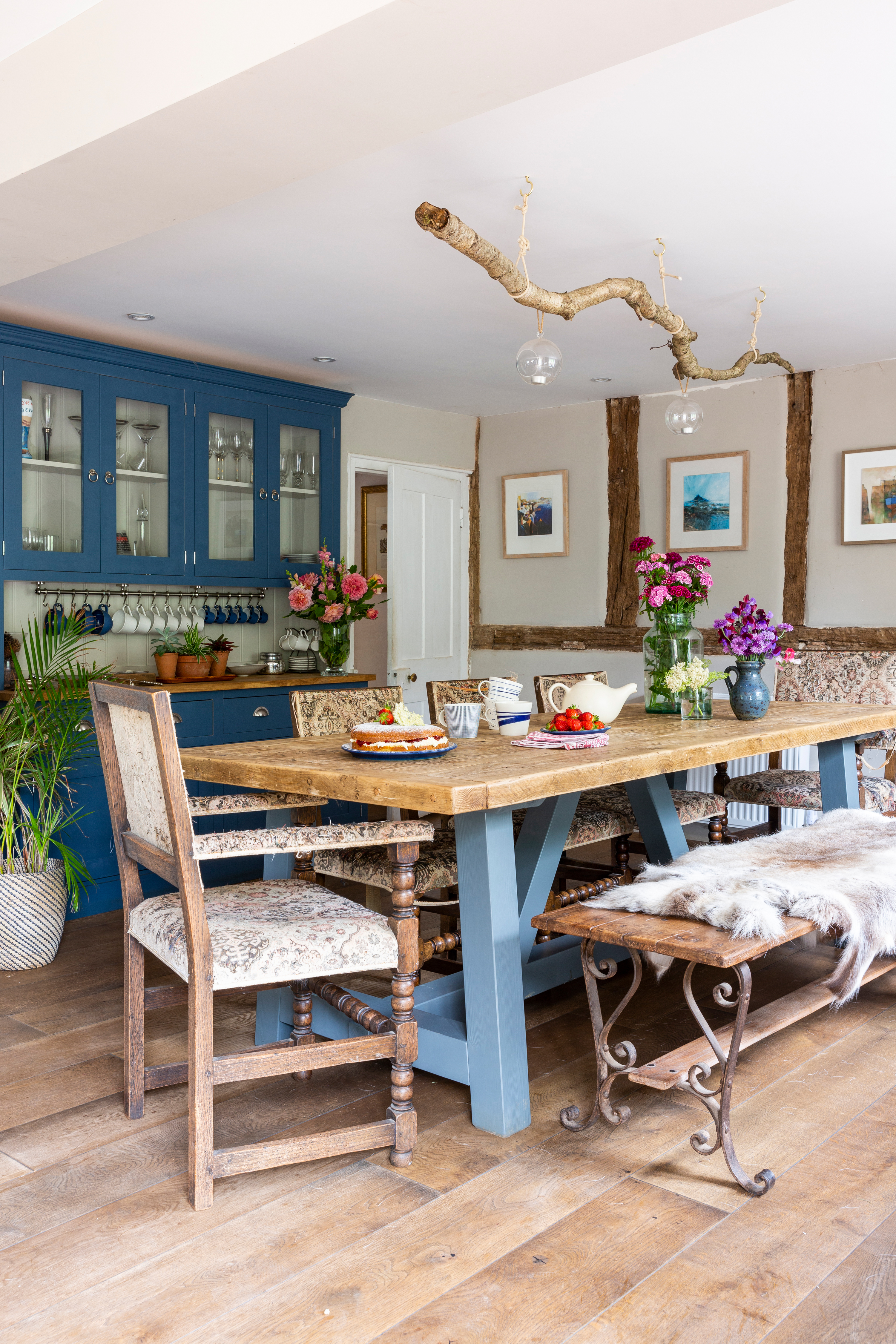
How much space does a family kitchen need?
To create an effective family kitchen, you need space. There is no benefit to cramming too much into a small kitchen, so in order for the room to work, it must be large enough. One way to achieve this is to open your home up either by extending the existing space, or by removing walls to create an open-plan living kitchen and dining area – both of which can open out to the garden through wall-to-wall doors.
Assuming they meet certain criteria, such projects often do not require planning permission and can be completed under permitted development rights. Alternatively, you may be able to create a large open plan space by removing a non load-bearing wall between the kitchen and dining room.
Designing a family kitchen
There is a slightly different set of requirements when choosing appropriate kitchen units, the best kitchen worktop types, kitchen flooring and hardware in a kitchen that is going to be frequented by the whole family.
Firstly, opt for surfaces that are easy to clean and won’t stain if spilled upon. That goes for cupboard doors, as well as splashbacks and worktops – no one wants to see orange juice drip marks down to front of their new and expensive wooden doors.
Metro tiles make a stylish, practical and cost effective option when it comes to your splashback. They wipe clean easily and look perfect in both traditional and modern kitchens.
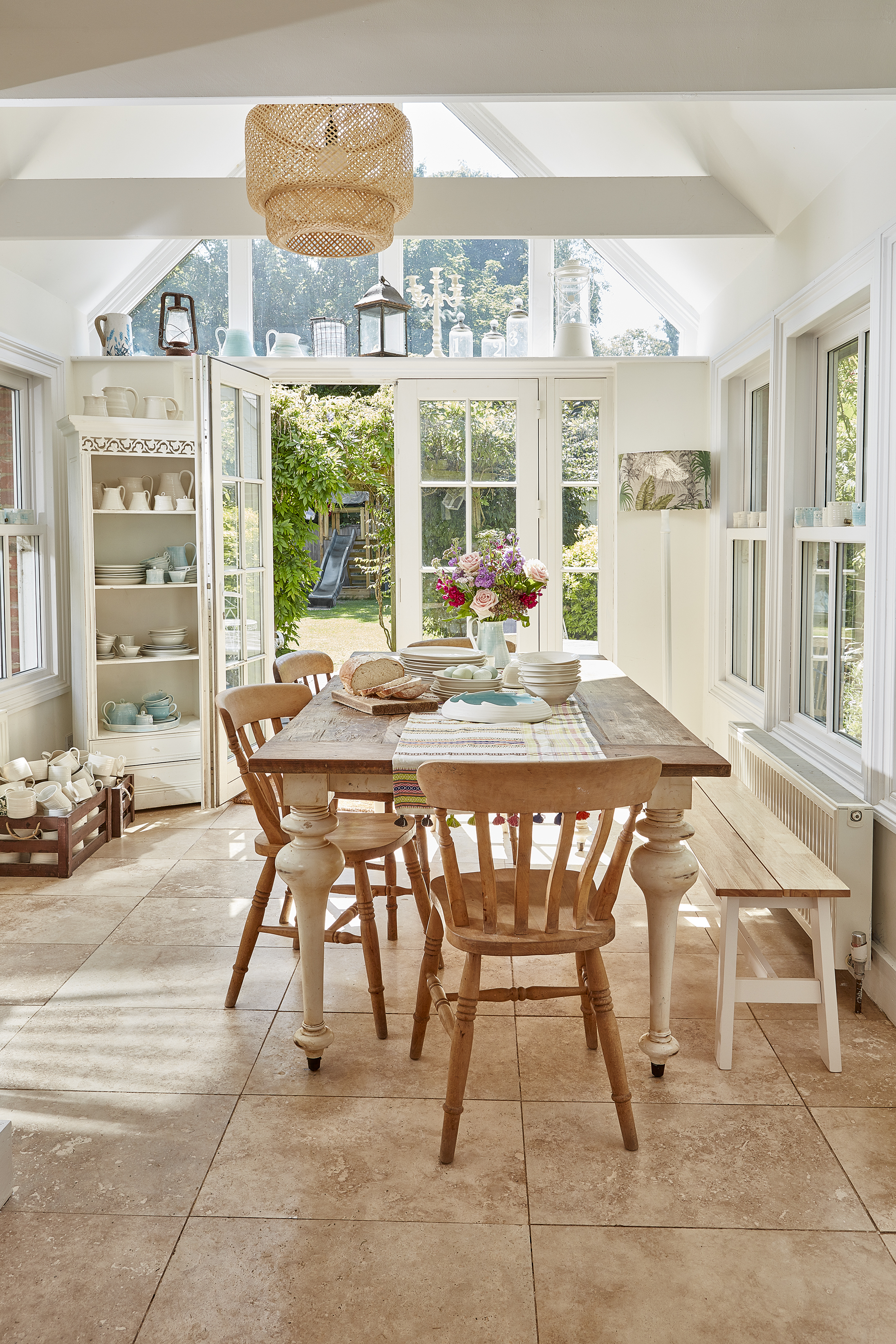
An easy clean worktop is essential. You don’t want a material that will absorb every little spill, or be marked easily if someone drops something on it. Composite stone or granite is ideal, as well as stainless steel or even glass. Wood can be sanded down and refinished if it is damaged, but it is also the easiest material to mark.
With worktops especially, but also with any units or surfaces with an edge, it is worth considering rounding the corners. A curved kitchen is not only stylish, it reduces the chance of injury to any children that might be at risk of banging their head.
Finally, consider kitchen flooring. In a family kitchen, it should be practical, hardwearing and slip-resistant. Stone or ceramic tiles are good options but if you would prefer a more cushioned surface, look at high quality vinyl flooring, which can mimic beautifully real wood and stone.
Need more design and layout tips? Find out in our feature on how to design a kitchen.

Including a kitchen island in your design
Creating some form of central hub is essential in all family kitchens. A kitchen island is the ideal solution as it can also provide a natural break between the practical cooking zones and the more relaxing living and dining areas. It can also create a relaxed area, separate from the dining table, which can be used for family breakfasts and lunches.
The best islands have island seating at one side, with bar stools tucked underneath a projected work surface (avoid high stools for small children), facing a prep area, perhaps with a sink or hob and dishwasher, so that the cook isn’t isolated from the family or guests while preparing food.
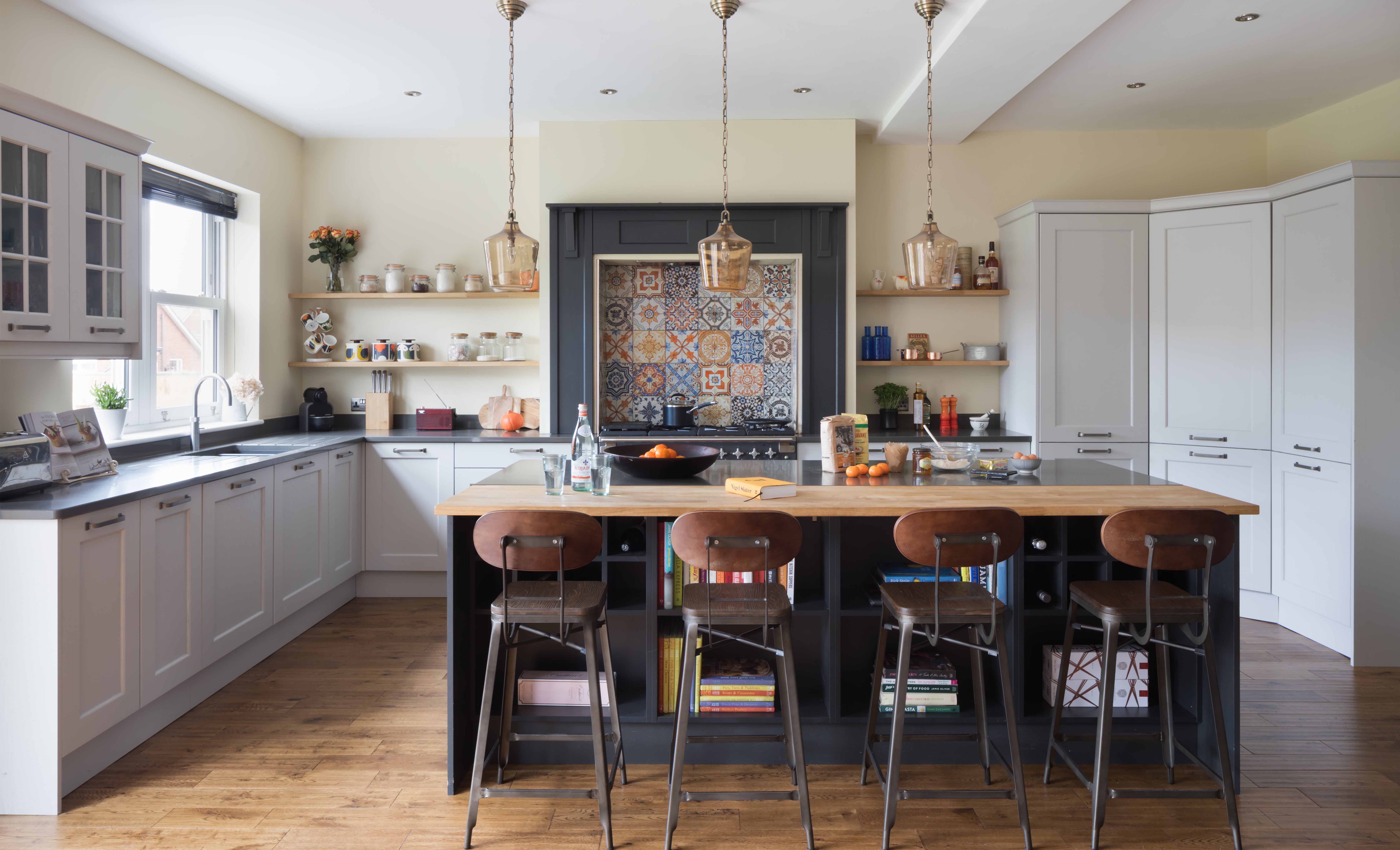
Finding space for a dining table in a family kitchen
Where space allows, a family-sized kitchen diner should include a good-sized dining table, preferably one which is extendable to accommodate gatherings. A dining table can provide a good transition between the kitchen and a more informal sitting area, with one or two comfy sofas or armchairs. Where possible, window seats provide a clever solution.
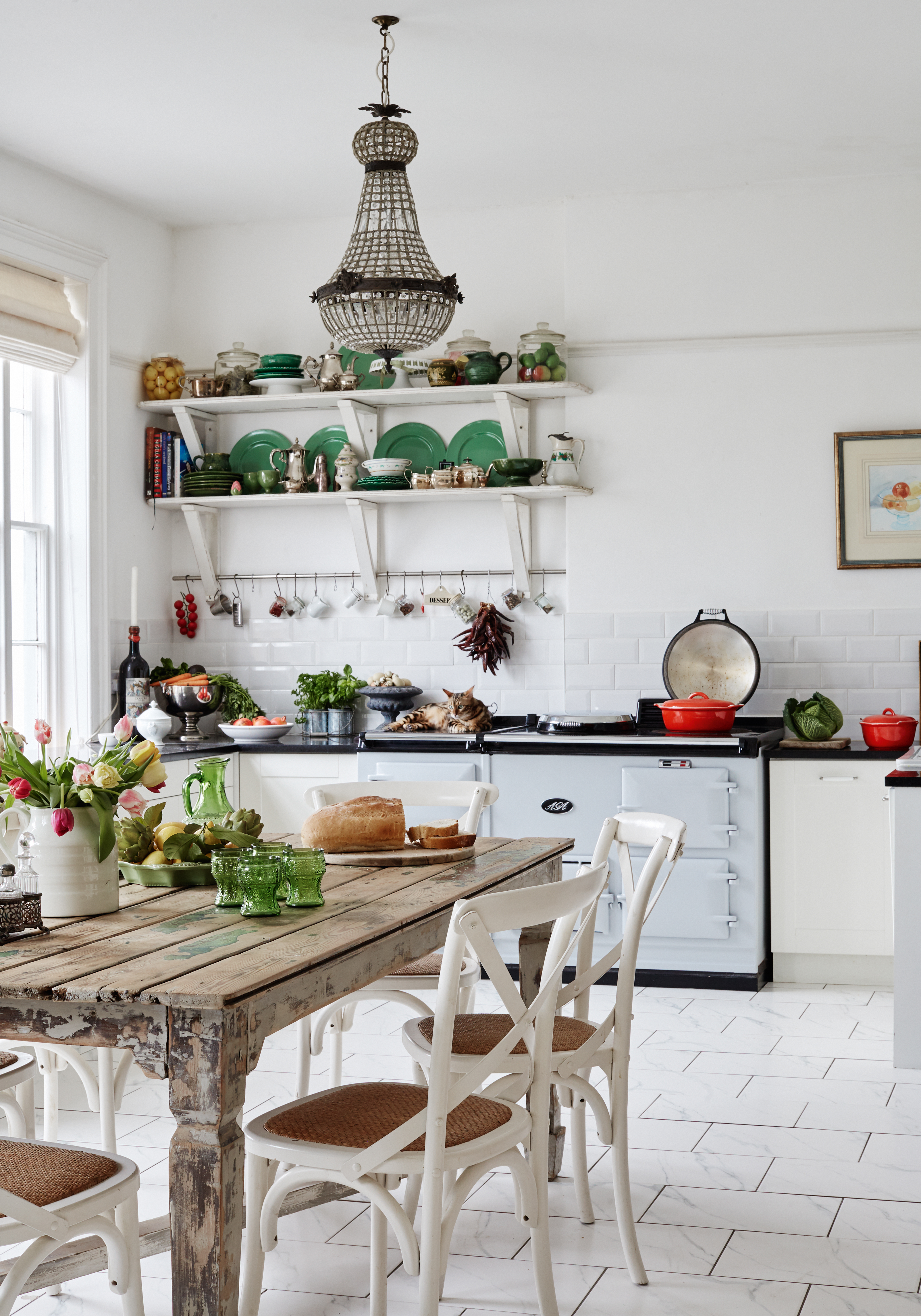
Including a home office space in a family kitchen
It is all well and good swearing that the family rooms will be mobile and gadget free zones, but inevitably, they will work their way in eventually. If you’re planning on your traditional family kitchen being the homework zone for the kids, or if you might use it as an impromptu home office, then having ample plugs and charging stations in the kitchen is a good option.

Including a sound system in your family kitchen
One of the most popular and persistent trends in the smart home automation area are multi-room audio systems. These are particularly useful to include in traditional family kitchen spaces, as you can listen to music whilst cooking, the kids can listen to their own music when they’re around, or you can easily play music when entertaining or having a family party.
Shopping for family kitchen appliances
If you're designing a family kitchen now but only have a small baby, it pays to think ahead: that baby will quickly become a ravenously hungry teenager (believe us). So, go for a fridge/freezer with the largest capacity you can fit in, and do the same for the other appliances, from ovens to washing machines. Find all our appliance guides on our hub page, and don't miss the latest smart kitchen appliances, such as smart fridges, if you're into the latest tech. Find more about this on The Hub, our smart home page.
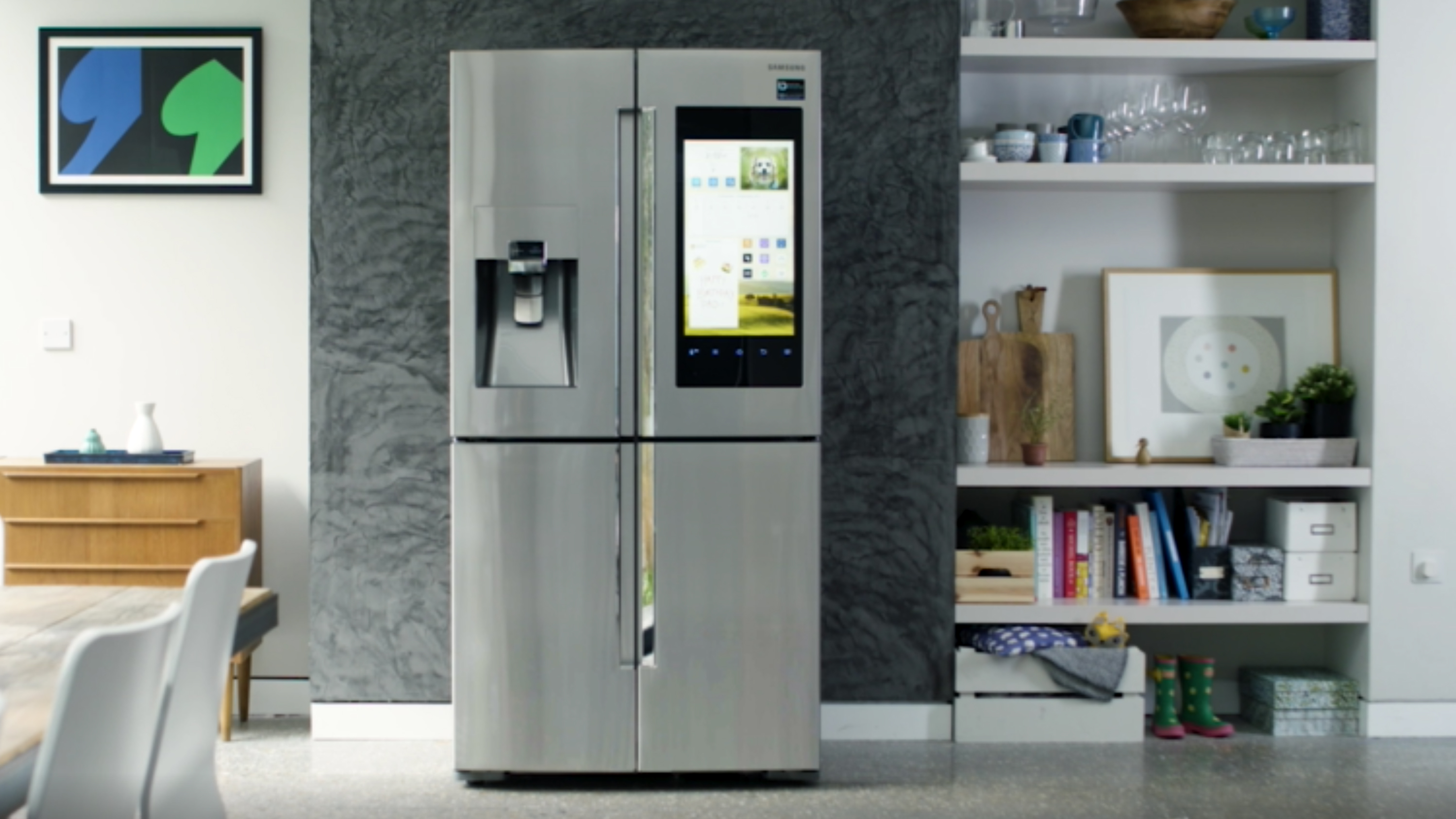
Samsung RF56M9540SR Family Hub smart fridge freezer
Clear clutter with useful kitchen storage
The bigger the family, the more kitchen storage ideas will be required. Consider pan drawers and pull-out shelving. A large pantry or pantry storage ideas kept distinct from the prep area of the kitchen will allow for family members to help themselves to breakfast items and snacks without interrupting cooking.

Finding space for a utility room
If there is room, creating a separate utility room is a valuable addition in a family home. This means certain appliances, washing machines, dishwashers or even the fridge/freezer can be housed in a separate, but close by room. Invest in good utility and laundry storage ideas to keep the area organised and tidy.
More family-sized kitchen advice:
Get small space home decor ideas, celeb inspiration, DIY tips and more, straight to your inbox!

Lucy is Global Editor-in-Chief of Homes & Gardens having worked on numerous interiors and property titles. She was founding Editor of Channel 4’s 4Homes magazine, was Associate Editor at Ideal Home, before becoming Editor-in-Chief of Realhomes.com in 2018 then moving to Homes & Gardens in 2021. She has also written for Huffington Post, AOL, UKTV, MSN, House Beautiful, Good Homes, and many women’s titles. Find her writing about everything from buying and selling property, self build, DIY, design and consumer issues to gardening.